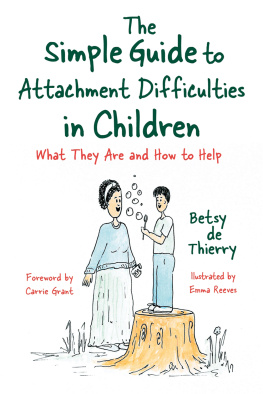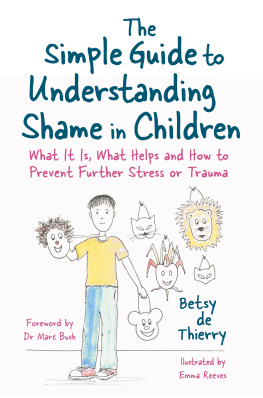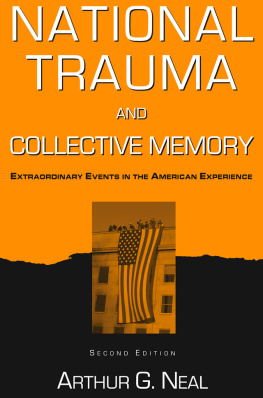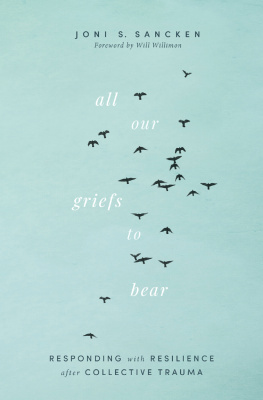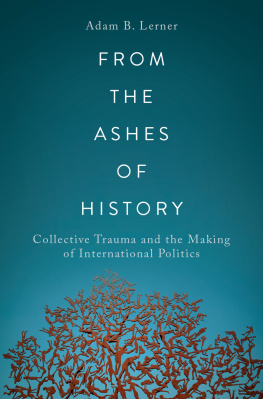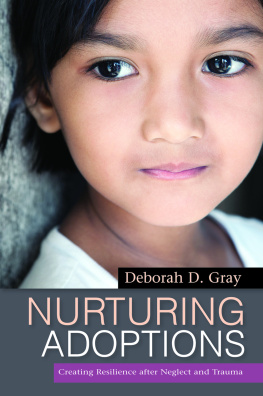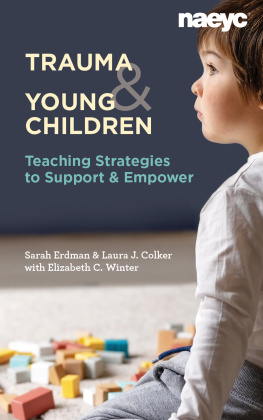Contents

The
Simple Guide to
Collective Trauma
What It Is, How It Affects
Us and How to Help
Betsy de Thierry
Foreword by Lisa Cherry
Illustrated by Emma Reeves

CONTENTS
FOREWORD
The challenge of making simple the complexity of trauma is not lost on Betsy. All her Simple Guides aim to open up a deeper, more coherent conversation and this book on collective trauma is no exception. Her very ability to give any kind of manageable definition to collective trauma is what makes this book so important and offers the reader an anchor upon which to continue the exploration.
Collective and community trauma is the reaction to an event or period of time where people share a traumatic experience whilst feeling terror, powerlessness and overwhelm. Whilst the collective trauma may be shared, the people will have varied experiences of it and will respond to these experiences differently, depending on their own personal backgrounds and current context.
Any writing about trauma challenges the writer and the reader as we go within, drawing upon the experiences that we may have had during our lives. Some of those experiences may sit so far within our bodies that we can almost pretend that they are not there. It is from this place that we might choose what we read and what we dont read; our bodies tell us that we do indeed know what we carry. It is worth being aware of those sensations in the body as you read, devouring their wisdom as they tell you that which it can be hard to tell ourselves in words. Be kind to yourself; collective trauma is all around us and Betsy offers examples of her own experience to gently take us on this internal exploration.
Betsy cleverly explores relationships, recovery and healing and invites the reader to explore all these ideas through reflective questions at the end of each chapter. In doing so, she reminds us that sleep, safety, breath, play and art support us in our healing. It is vital that we understand that we can recover. We do recover. But we will always need each other to do so.
Lisa Cherry
speaker, trainer and author on
trauma, recovery and resilience
INTRODUCTION
This book is a simple guide to a large and emotive subject.
Collective trauma can impact a whole community and the impact can then subsequently echo through many generations.
The aim of this book, as with others in the Simple Guides series, is not to provide a comprehensive account, but to help you to quickly gain an understanding of what collective trauma is, some common themes and characteristics, and how we can avoid the experience damaging our communities and generations to come.
This book aims to help anyone helping children or young people to recover from collective trauma. It also aims to equip the adult with knowledge that can facilitate change and hope for them and the younger generation. It also aims to equip the adult reader to help other adults, on the basis that all of us impact each other and if we can all build resilience and recover, then our communities will become healthier for all of us.
Although I specialise in developmental and complex trauma in my work, in my personal life, I am passionate about the overlap of every kind of trauma to humankind, and the ability to see how knowledge can positively impact whole communities.
Many readers of this book will have an experience of collective trauma; I have my own.
It can affect nations . I was born into the Burundian genocide in 1972 which left a continual sense of underlying tension and anxiety in the air of the beautiful country that I love. It is in nations like this that we see clearly how such atrocities have impacted multiple generations. Shock, terror, loss and bereavement have impacted everyone over the years.
It can affect organisations. On a far less traumatic scale, when I had a death threat and subsequent harassment and stalking in the UK, the people within the organisations that I led were impacted due to my inability to feel like I could be a part of the city where I lived. It became an experience of collective trauma, although many chose to leave the organisations quickly to avoid becoming traumatised, for fear that they would also be targeted.
It affects individuals. The five years of horror I faced as part of the stalking and harassment are very much part of my personal story and now also part of the story of the organisations I have been leading. Whilst some people left the organisations due to the volatility it caused, others stayed, and we made sure that post-traumatic growth was intentional. For me personally, I had to process my own pain to be able to continue to lead organisations that help others through trauma.
Collective trauma can affect individuals, organisations and nations and yet the impact can be wider still. This is shown by the important awakening of a generation to the extent of racism, prejudice and discrimination that has been tolerated for far too long.
Whilst my experience in Burundi was primarily about the horrors of community hatred and murder, my experience in the UK was about the power of words being used to try to destroy lives.
An understanding of trauma can diminish the impact of destructive experiences and can even facilitate post-traumatic growth. I hope that this book helps you as you make a difference to those around you in the way you choose to use your words, your skills, your choices and your ability to love others despite pain.
The fact that you are reading this means that you are already committed to being intentional about changing lives and for that I salute you! If no one has ever said it to you before well done and thank you for not sinking into a self-absorbed bubble of denial, but instead continuing to learn and help others whether thats your loved ones or a whole community, organisation or nation.
Well done!
Betsy x
Chapter One
AN INTRODUCTION TO COLLECTIVE TRAUMA AND THE IMPACT OF THE THREAT RESPONSE
What is collective trauma?
Lets start with the definition of the word trauma. Trauma can be defined as any experience or repeated experience where the person feels terrified, powerless and overwhelmed, to the extent that it challenges their capacity to cope. It can leave an imprint on the persons nervous system, emotions, body, behaviours, learning and relationships.
There are so many different traumatic experiences and its important to explore what themes they have in common and where the impact of them differs. Most of my clinical work is focused on developmental trauma and interpersonal trauma, such as abuse, neglect and attachment trauma where the child was terrified, powerless and overwhelmed over a sustained period of time.
I often refer to the trauma continuum (de Thierry 2015), which gives us language around the different impacts of those experiences. Type I trauma is described as a single traumatic incident whilst Type II trauma is described as multiple, repeated traumatic experiences over a length of time. Type III trauma is a name which attempts to capture a description of a life full of repeated, severe, multiple and different traumatic experiences.
The term PTSD (post-traumatic stress disorder) is not used in the book because the symptoms of trauma are seen as just that behaviours that demonstrate that the person has been impacted by the traumatic experience. I do not believe we need to frame these coping mechanisms as a disorder.


